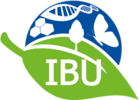Contact
Prof. Dr. Helmut Hillebrand
Institute of Chemistry and Biology of the Marine Environment (ICBM) Phone (OL) +49 (0)441 798 3614 Phone (WHV) +49 (0)4421 944 102 eMail helmut.hillebrand@icbm.de
A1
A1 Biodiversity and metaecosystem dynamics in unstable environments
PI: Helmut Hillebrand, Co-PIs: Bernd Blasius, Gerhard Zotz
Recent ecological advances relied on spatial processes to understand population dynamics of single species in landscapes (metapopulation ecology), the biodiversity and coexistence of interacting species across habitats (metacommunity ecology) and the flow of matter and energy through food webs and between local habitats (metaecosystem ecology). The three advisors of this thesis have a strong background in spatial ecology, including the dynamics of epiphytes in tropical forests (Zotz), island theory of biogeography (Zotz & Blasius), experimental test of responses to disturbance (Hillebrand) and metaecosystem ecology (Blasius & Hillebrand). This expertise is joined here to fill important gaps in understanding how biodiversity patters driven by spatial dynamics affect resource use and elemental flows in spatially structured environments. The PhD student has the opportunity to explore three different avenues of research.
Model
A spatially explicit resource competition model developed by D. Hodapp, B. Blasius, H. Hillebrand and A. Ryabov allows for the integration of trait-dependent coexistence mechanisms with resource use. The results demonstrate how the increase of biomass production with increasing species numbers is highly dependent on the match or mismatch between trait and environmental dimensionality, as well as on spatial heterogeneity. The model will be amended in three steps. First, we will incorporate fluctuating or stochastic resource supply into the model and compare the outcome of simulations to the constant supply scenarios tested so far. Second, we will induce mortality by disturbance or consumers and test how traits not related to resource use but to tolerance or recovery affect resource use efficiency. Finally, we will transform this metacommunity model into a metaecosystem model by allowing spatial flow of resources in addition to the dispersal of organisms.
Experiments
For microalgae, the Plankton Ecology Lab has established experimental setups allowing the manipulation of coupled habitat patches in metaecosystems. This setup can be used to test all the different aspects of the model as presented above. Patches with different degrees of connectivity can be subjected to fluctuating or pulse-disturbance conditions and responses of biodiversity and primary production can be measured simultaneously. We would be especially interested in testing the link between biodiversity and ecosystem functions (primary production, resilience) in these model ecosystems.
Observational Data
The co-advisors of this project have access to data sets of spatially structured ecosystems, including information on biodiversity, resource availability and resource use. These data sets comprise lake ecosystems as well as rainforests. Thus, the PhD student will be able to compare model and experimental outcomes to patterns found in real ecosystems.

